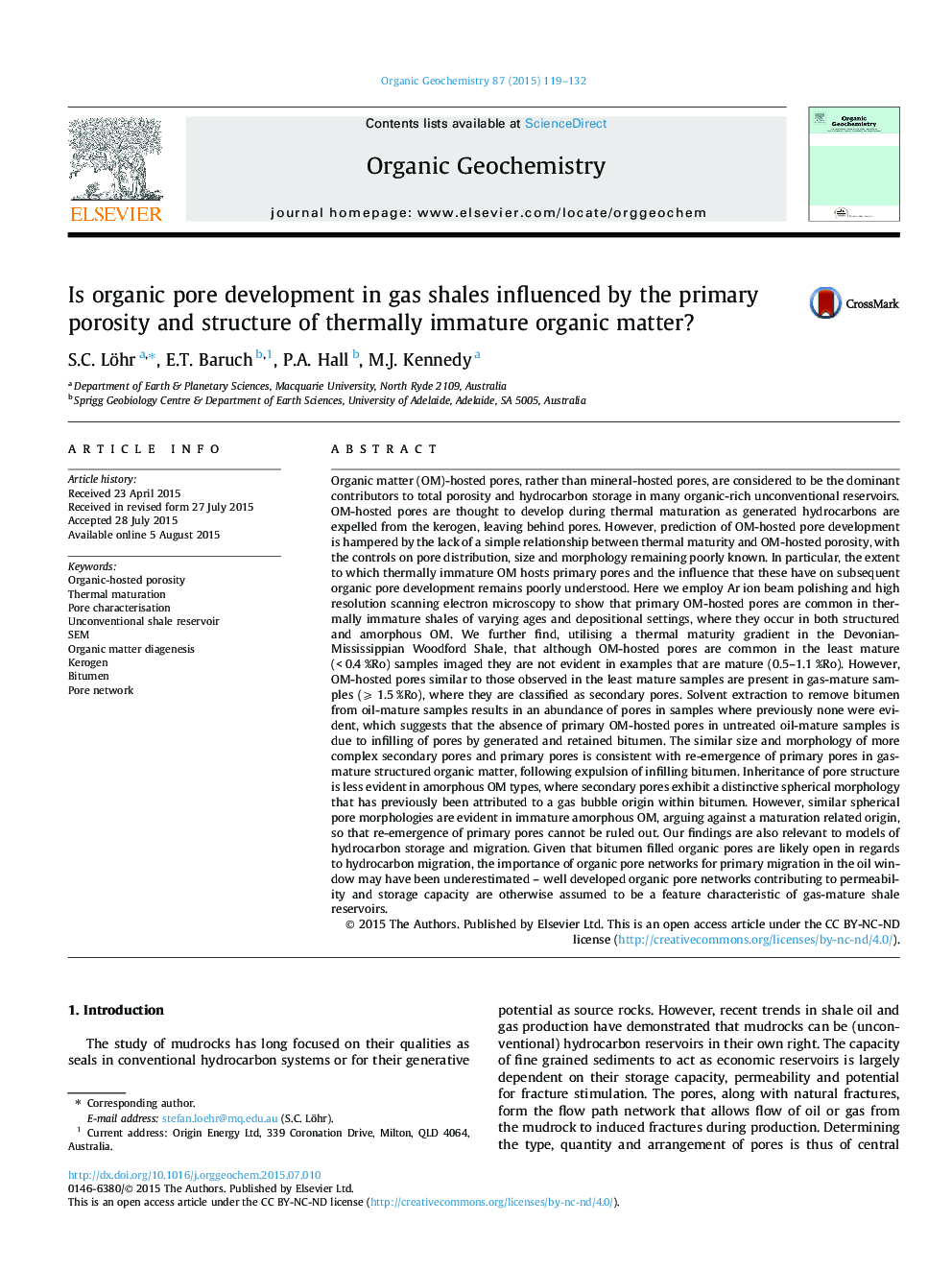| کد مقاله | کد نشریه | سال انتشار | مقاله انگلیسی | نسخه تمام متن |
|---|---|---|---|---|
| 5162142 | 1502275 | 2015 | 14 صفحه PDF | دانلود رایگان |
عنوان انگلیسی مقاله ISI
Is organic pore development in gas shales influenced by the primary porosity and structure of thermally immature organic matter?
ترجمه فارسی عنوان
آیا توسعه منافذ آلی در شیلات گاز تحت تأثیر تخلخل اولیه و ساختار ماده آلی ترمو نابالغ قرار گرفته است؟
دانلود مقاله + سفارش ترجمه
دانلود مقاله ISI انگلیسی
رایگان برای ایرانیان
کلمات کلیدی
موضوعات مرتبط
مهندسی و علوم پایه
شیمی
شیمی آلی
چکیده انگلیسی
Organic matter (OM)-hosted pores, rather than mineral-hosted pores, are considered to be the dominant contributors to total porosity and hydrocarbon storage in many organic-rich unconventional reservoirs. OM-hosted pores are thought to develop during thermal maturation as generated hydrocarbons are expelled from the kerogen, leaving behind pores. However, prediction of OM-hosted pore development is hampered by the lack of a simple relationship between thermal maturity and OM-hosted porosity, with the controls on pore distribution, size and morphology remaining poorly known. In particular, the extent to which thermally immature OM hosts primary pores and the influence that these have on subsequent organic pore development remains poorly understood. Here we employ Ar ion beam polishing and high resolution scanning electron microscopy to show that primary OM-hosted pores are common in thermally immature shales of varying ages and depositional settings, where they occur in both structured and amorphous OM. We further find, utilising a thermal maturity gradient in the Devonian-Mississippian Woodford Shale, that although OM-hosted pores are common in the least mature (< 0.4 %Ro) samples imaged they are not evident in examples that are mature (0.5-1.1 %Ro). However, OM-hosted pores similar to those observed in the least mature samples are present in gas-mature samples (⩾ 1.5 %Ro), where they are classified as secondary pores. Solvent extraction to remove bitumen from oil-mature samples results in an abundance of pores in samples where previously none were evident, which suggests that the absence of primary OM-hosted pores in untreated oil-mature samples is due to infilling of pores by generated and retained bitumen. The similar size and morphology of more complex secondary pores and primary pores is consistent with re-emergence of primary pores in gas-mature structured organic matter, following expulsion of infilling bitumen. Inheritance of pore structure is less evident in amorphous OM types, where secondary pores exhibit a distinctive spherical morphology that has previously been attributed to a gas bubble origin within bitumen. However, similar spherical pore morphologies are evident in immature amorphous OM, arguing against a maturation related origin, so that re-emergence of primary pores cannot be ruled out. Our findings are also relevant to models of hydrocarbon storage and migration. Given that bitumen filled organic pores are likely open in regards to hydrocarbon migration, the importance of organic pore networks for primary migration in the oil window may have been underestimated - well developed organic pore networks contributing to permeability and storage capacity are otherwise assumed to be a feature characteristic of gas-mature shale reservoirs.
ناشر
Database: Elsevier - ScienceDirect (ساینس دایرکت)
Journal: Organic Geochemistry - Volume 87, October 2015, Pages 119-132
Journal: Organic Geochemistry - Volume 87, October 2015, Pages 119-132
نویسندگان
S.C. Löhr, E.T. Baruch, P.A. Hall, M.J. Kennedy,
